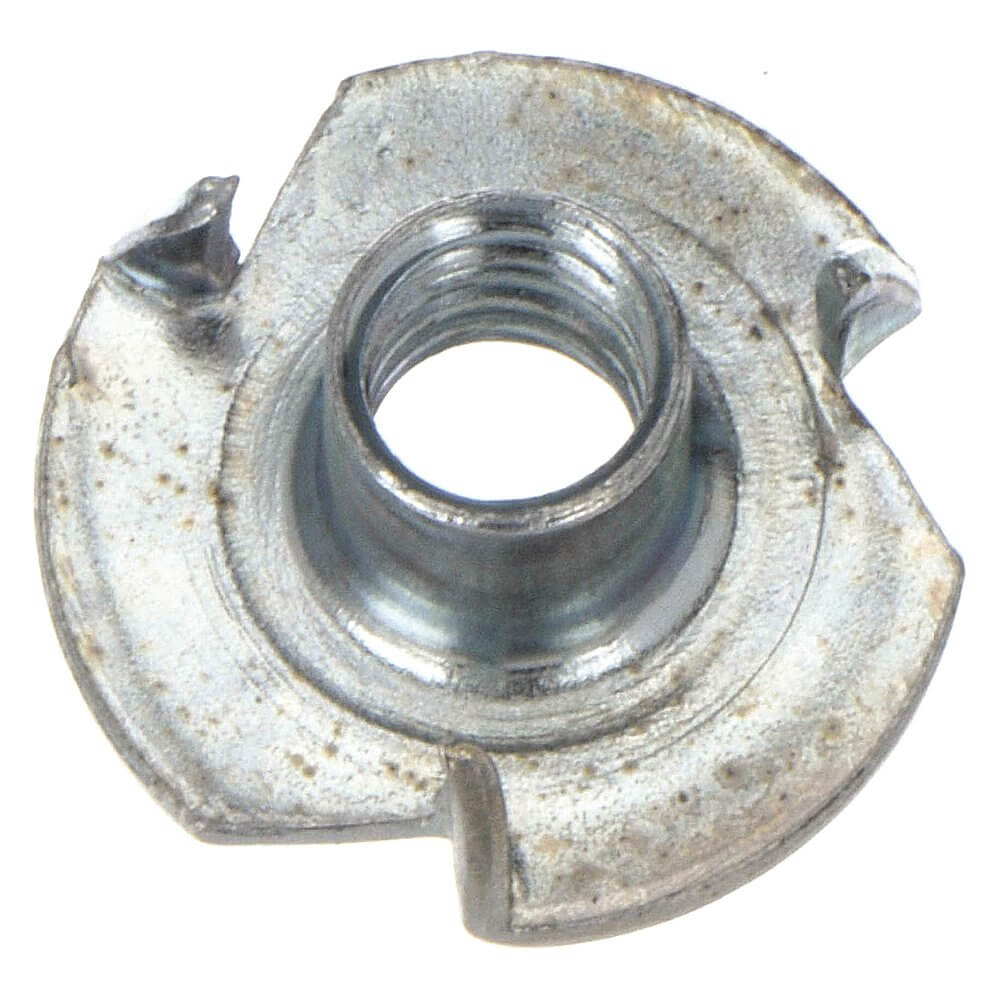T-Nuts For Wood
<p>Tee nuts or T-nuts are used for fastening wooden or composite material workpieces, leaving a flush surface. They are also known as blind nuts, insert nuts, rivet nuts or drive-in nuts.</p>
APPROVED VENDOR -
T-nut Prongs
APPROVED VENDOR -
T-Nut 3/8-16 3 Prongs, 100PK
| Model | Item | Price (ex. VAT) | |
|---|---|---|---|
| 302100-PG | AB4EJC | - | RFQ |
T-Nuts For Wood
Tee nuts or T-nuts are used for fastening wooden or composite material workpieces, leaving a flush surface. They are also known as blind nuts, insert nuts, rivet nuts or drive-in nuts.
Frequently Asked Questions
What should be the size of the hole drilled for a T-nut?
- Generally, a 5/16-inch bit is used for a 1/4-inch T-nut.
- The hole should be slightly larger than the shank.
How far apart should T-nuts be placed?
- T-nuts should be located such that they miss the framing studs.
- Place T-nuts about 8 inches apart on the first row and offset that pattern by 4 inches on the following line.
What is a pronged tee nut?
Pronged tee nuts are used as wood fasteners to receive a machine thread. These tee nuts are driven and secured into a pre-drilled hole.
Where are screw-locking tee nuts used?
These nuts are used where vibration is a serious concern.
How to install a tee nut?
- Mark T-nut locations.
- Drill T-nut holes by placing two plywood sheets together. The sheets should be facing up while drilling the holes.
- From the side opposite to where the holes are drilled, attach the T-nuts.
- Use a hammer to properly seat the nuts. Make sure that they are flush with the plywood surface.
How to fix spinning T-nuts?
- The threaded rod should be inserted into the drill and securely clamped using the chuck.
- When the threads catch, spin the threaded rod until it is inserted through the T-nut hole.
- Set your drill to a low speed.
- Simply reverse the drill to remove the threaded rod after tightening the T-nut against the panel's back until it is secure. This technique is effective for replacing a spinning T-nut or tightening a T-nut that has become loose.
We are here to help!
Looking for a part not listed here?
Explore More
- Document Covers Displays and Frames
- Gas Welding Equipment
- Starters and Contactors
- Duct Fans and Accessories
- Pneumatic Motors
- Hang and Stack Bins
- Buckets and Pails
- Hose Stations
- Sanding Disc Kits
- Predesigned Room Kits
- INGERSOLL-RAND Pneumatic Nut Runner
- BRADY Keyed Alike Extended Shackle Padlock
- MUELLER INDUSTRIES Brass Gate Valves, FNPT Threaded Connection
- SALSBURY INDUSTRIES Horizontal Mailbox Usps 12 Doors
- DIXON Hydraulic Hose Stems
- SPEARS VALVES PVC White Schedule 40 Fitting Short Repair Couplings, Socket x Socket, EPDM O-Ring
- FRIEDRICH Hose Connectors
- COX Plunger Assemblies
- BENCHPRO Foot Rests, 50 Inch Width
- BALDOR MOTOR Electric Motors


